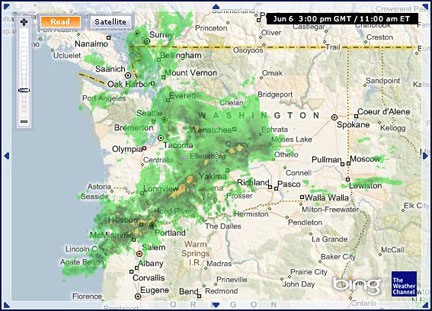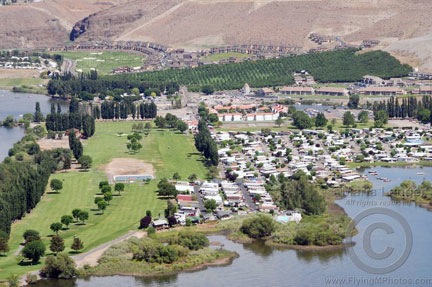Words representing letters.
The other day, a new Twitter friend (@mpowerdesign) tweeted:
WTF? Whiskey-tango-foxtrot! I didn’t know there was an actual “military alphabet.” Dad never told me! http://bit.ly/biyLQT
I replied:
It’s used in aviation, too.
This was news to her, which kind of surprised me. I idiotically assumed that everyone knew that pilots used these special code words. But I’m obviously wrong. And, at this point, you might be wondering what the hell I’m talking about.
Meet the “Pilot’s Alphabet”
I’m referring to the ICAO Spelling Alphabet. Wikipedia offers a good basic description:
The ICAO spelling alphabet, also called the NATO phonetic alphabet or the international radiotelephony spelling alphabet, is the most widely used spelling alphabet. […] The International Civil Aviation Organization (ICAO) alphabet assigns code words to the letters of the English alphabet acrophonically (Alfa for A, Bravo for B, etc.) so that critical combinations of letters (and numbers) can be pronounced and understood by those who transmit and receive voice messages by radio or telephone regardless of their native language, especially when the safety of navigation or persons is essential. The paramount reason is to ensure intelligibility of voice signals over radio links.
 In other words, pilots say words to represent letters so there’s no chance of being misunderstood. These words are universally used so all pilots know them. The table here lists them all, along with their all-important pronunciations. Note that not all are properly pronounced the way you might think — Quebec is a good example.
In other words, pilots say words to represent letters so there’s no chance of being misunderstood. These words are universally used so all pilots know them. The table here lists them all, along with their all-important pronunciations. Note that not all are properly pronounced the way you might think — Quebec is a good example.
Although this is officially known as the ICAO Spelling Alphabet, it has been adopted by a number of other organizations, including NATO, the FAA, and ANSI. @mpowerdesign’s link to militaryspot.com identified it as the “Official U.S. Military Alphabet,” which is accurate only because the U.S. military adopted the ICAO Spelling Alphabet. The same goes for me referring to it as the “pilot’s alphabet.”
How It’s Used in Aviation
If you read this blog regularly, you might recall me referring to my helicopter as Zero-Mike-Lima. That’s because the last three characters of its N-number (like an aircraft license plate, painted on in big numbers and letters) are 0ML or zero, mike, and lima. When I identify myself to air traffic control, I call myself “Helicopter Six-Three-Zero-Mike-Lima.” The controller can, at his option, shorten this to the last three digits (Zero-Mike-Lima) and, if he does, the subsequent exchange between us will include just those digits. I use those digits as a sort of name for my helicopter.
In aviation, letters are also used to identify airports. So Phoenix Sky Harbor would by PHX or Papa-Hotel-XRay and Wenatchee Pangborn would be EAT or Echo-Alpha-Tango. Charted intersections and VORs also use letters and, thus, these codes. A pilot might use this extensively when filing a flight plan or receiving a departure clearance.
Towered airports use letters to identify the automated traffic advisory system (ATIS), which is generally revised and re-recorded hourly. At the beginning and end of the recording, the recording identifier will be stated — for example, “Deer Valley Tower, Information Juliet” or “Advise on initial contact you have Golf.” When a pilot makes his first call to the tower, he needs to include the ATIS identifier, so a call might sound like this:
Deer Valley Tower, Helicopter Six-Three-Zero-Mike-Lima, 10 miles north, landing west helipad with Juliet.
An airport’s ground control will also provide runway exit and taxi information to airplanes using these code words for letters. For example, they might tell an airplane to exit at “alpha-four” or use “taxiway charlie.” I don’t hear much of that because I don’t generally talk to ground control.
@mpowerdesign asked if I had to memorize it. I guess I did. It didn’t take much doing, though. The words are used so often in aviation that you kind of absorb them when you communicate. I make a special effort to keep them in my mind by using the same letters when I need to spell something out to someone — for example, “A as in alpha, B as in bravo” instead of using whatever words come to mind like most people do.
Expand Your World
At the end of our short exchange, @mpowerdesign tweeted:
Geez…you learn something new every day! See, this is why I tweet… :-)
And I think that sums up one of the reason I participate in Twitter. By following a variety of people with a variety of interests from a variety of places all over the world, you can’t help but learn new things, just by participating in Twitter conversations. It’s one way to expand your world.
How about doing something to show your appreciation? I’d love it if you’d add a comment at the end of this post to share your feedback with me and others. But I’d really love it if you’d visit my Support page and chip in a few dollars to help cover the cost of hosting this blog and motivate me to keep writing new, interesting content. It’ll only take a moment and I really would appreciate it!


 The National Weather Service at
The National Weather Service at  When rain is in the area or on the way, I use the
When rain is in the area or on the way, I use the  When I’m out and about and have access to the Internet, I use WeatherBug on my iPad to see weather information, including a radar graphic, forecast summary, and hour-by-hour forecast. I can also use its Webcam images to help judge visibility in the event that I need to cross the Cascades to get to Seattle. (Which I don’t usually do during the season.) WeatherBug is also available for mobile phones; I really do need to get it back on my BlackBerry.
When I’m out and about and have access to the Internet, I use WeatherBug on my iPad to see weather information, including a radar graphic, forecast summary, and hour-by-hour forecast. I can also use its Webcam images to help judge visibility in the event that I need to cross the Cascades to get to Seattle. (Which I don’t usually do during the season.) WeatherBug is also available for mobile phones; I really do need to get it back on my BlackBerry. The helicopter is a quarter mile away and already fueled and preflighted. All I have to do is pull off the blade covers. I can be airborne within 10 minutes of my client’s call. The orchard is a 4-minute flight from here. So I’d much rather sit in my nice warm RV, watching the weather on radar, than sitting out in my truck by the helicopter, blind without most of my weather sources.
The helicopter is a quarter mile away and already fueled and preflighted. All I have to do is pull off the blade covers. I can be airborne within 10 minutes of my client’s call. The orchard is a 4-minute flight from here. So I’d much rather sit in my nice warm RV, watching the weather on radar, than sitting out in my truck by the helicopter, blind without most of my weather sources.
